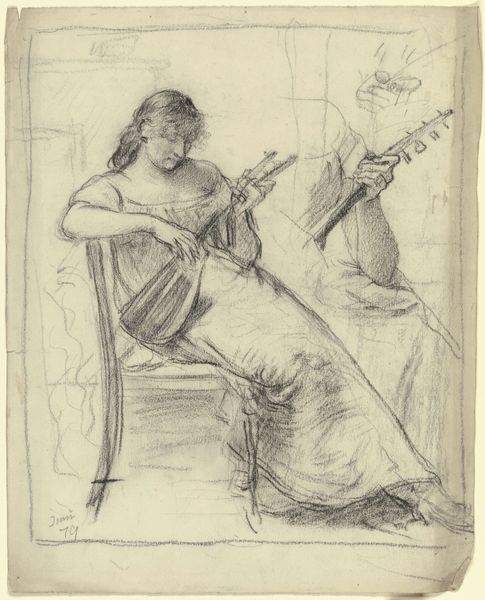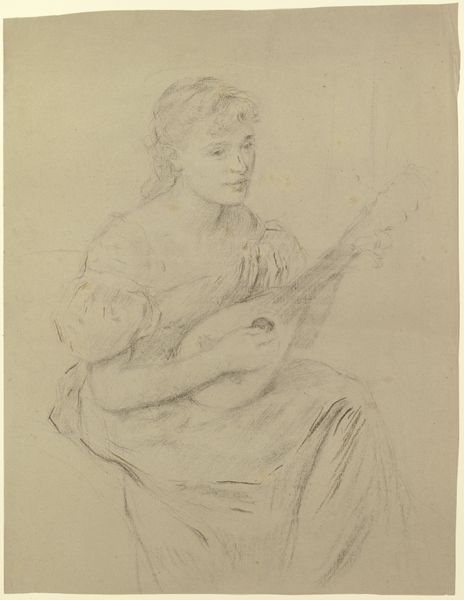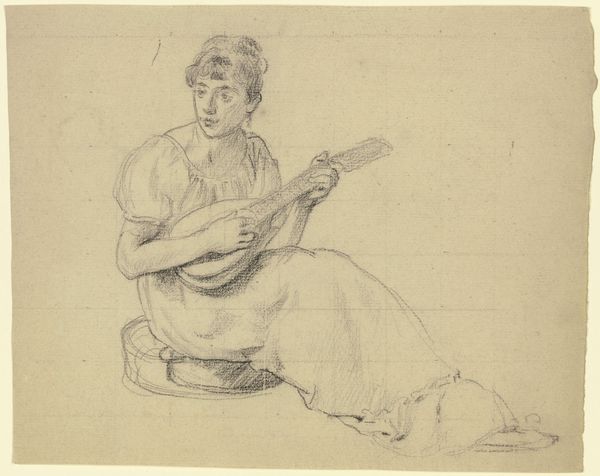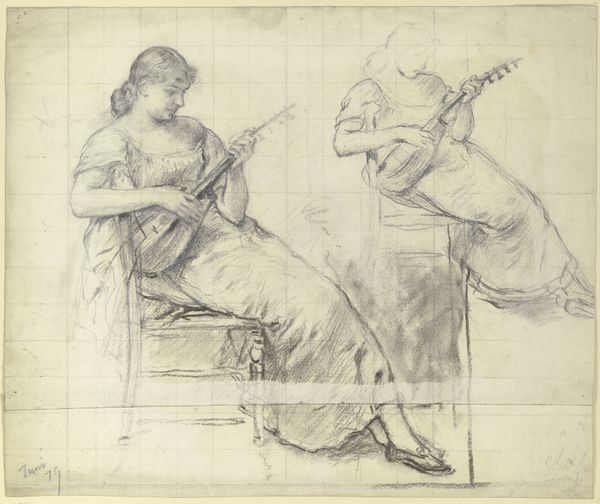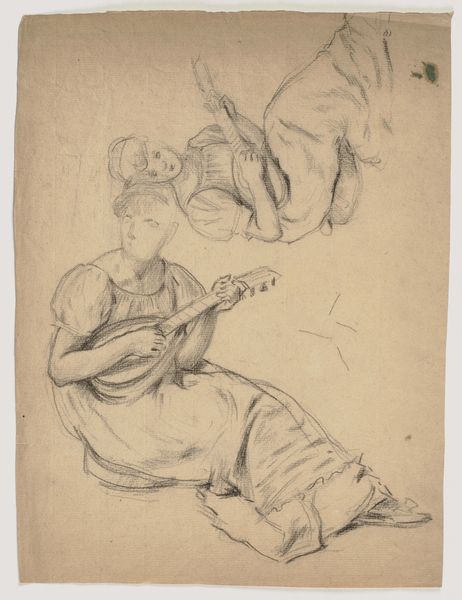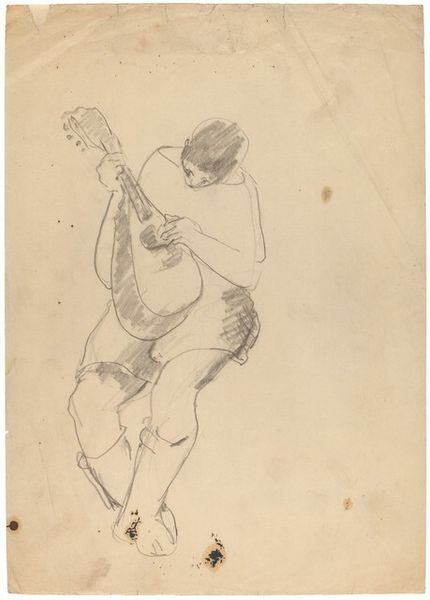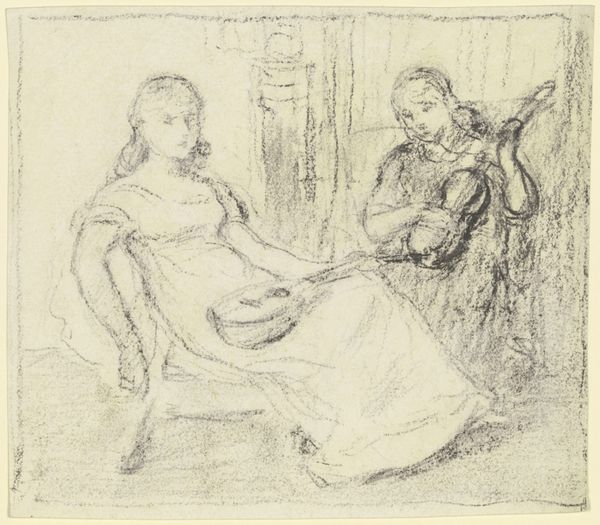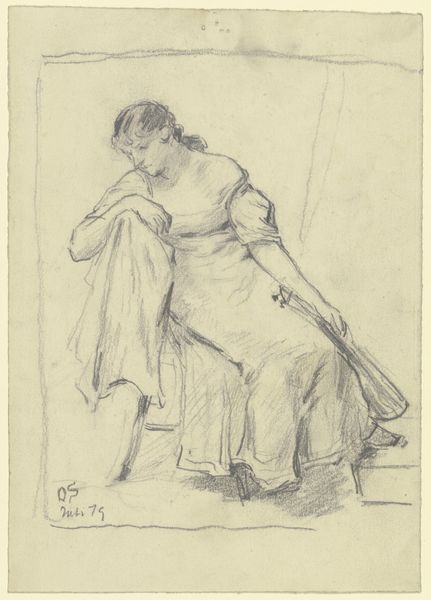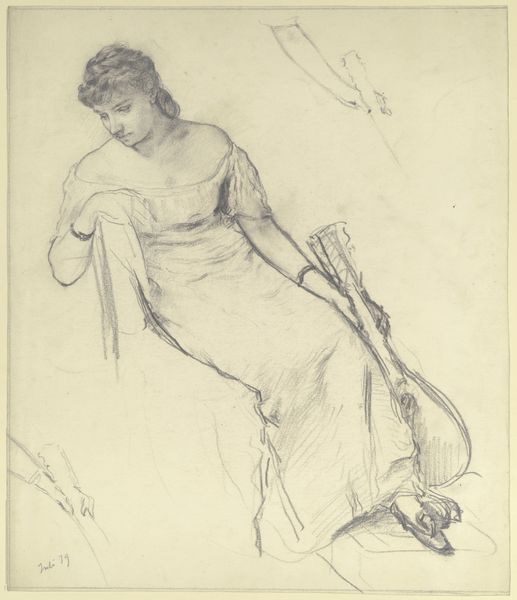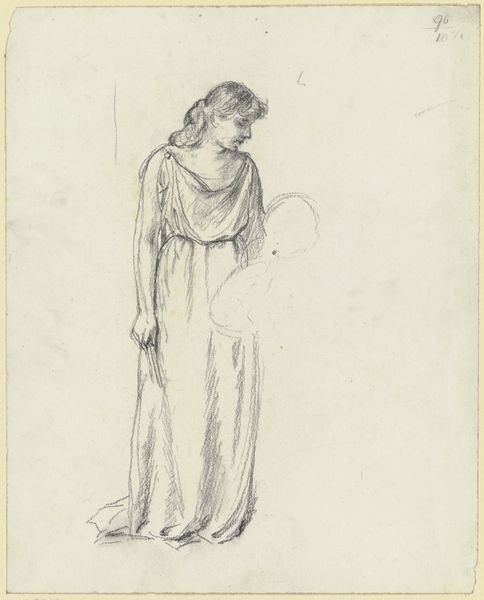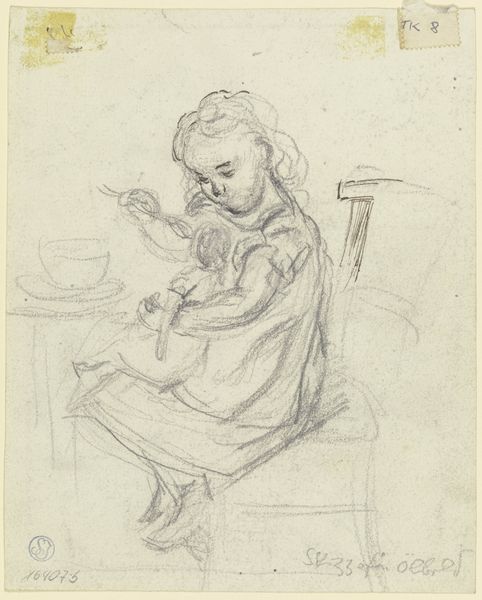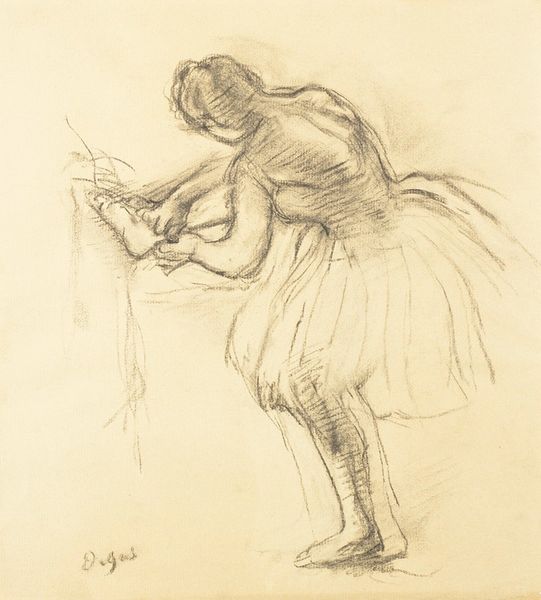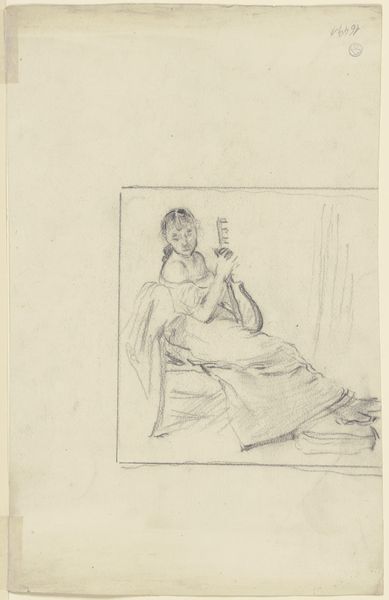
Copyright: Public Domain
Curator: Standing before us is Otto Scholderer’s “Sitzende junge Frau, Mandoline spielend,” made in 1879. The piece is a pencil drawing on paper currently residing at the Städel Museum. Editor: There's a beautiful simplicity to this drawing, an intimacy almost. The stark use of line captures a quiet, domestic moment. I’m immediately struck by how minimal the tools are, yet the texture of the fabric and the weight of the figure come across so clearly. Curator: Scholderer's choice of a pencil drawing, especially at that time, does push against academic conventions which prioritized painting. It invites us to consider the production of art as inherently connected to the physical tools available, highlighting access and affordability. I mean, how was the mass production of graphite affecting artistic creation and the consumption of art? Editor: It speaks volumes, doesn't it, about the burgeoning art market of the late 19th century and how these works would be consumed? I see a distinct move towards Realism that brings the quiet dignity of these women of the burgeoning bourgeoisie into focus and celebrates leisure as a marker of cultural capital. Curator: The mandolin, particularly, is interesting here. It wasn’t just a musical instrument; it was also a manufactured object. Its presence implies an interest in consumer culture trickling down. We need to also acknowledge the labour behind creating the materials, the graphite, and the paper itself! Editor: And the implied sound—I mean, a mandolin performance would have carried significant social implications for gender expectations, too! Think about the expectations placed on middle-class women in domestic spaces, versus how and where a male musician might perform publicly. I love the constraints—and even constrictions—placed upon artistic imagery like this and then rebelled against by Impressionists. Curator: Yes! The material realities of the woman and the mandolin really emphasize class boundaries that determined the accessibility and possibilities for people. And this becomes something the artist draws attention to. Editor: It definitely underscores how a piece like this reflected social structures but also, subtly, the possibilities to represent lived experience of the 19th century. Curator: Looking closely at art through the lens of material reality gives such insight! It challenges how art history constructs value. Editor: Absolutely! I hadn’t thought of the pencil, and mass manufacturing processes having such impact, so really it broadens the discussion, doesn't it?
Comments
No comments
Be the first to comment and join the conversation on the ultimate creative platform.
